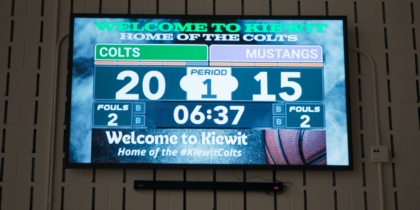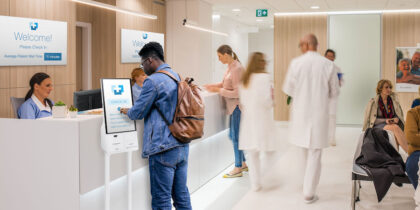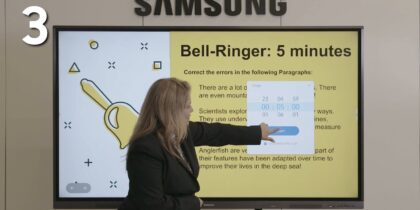The best digital signage projects are built around the viewing audience, not the technology. That was the message repeatedly reinforced by experts relating to industry trends at the InfoComm 2016 Digital Signage Summit in Las Vegas last week.
“We all hear the phrase ‘Content is King’ but here’s what I tend to say: ‘Objectives are King,'” explains Alan Brawn, an industry consultant and educator with 35 years of experience in the pro-AV business.
The day-long summit, held ahead of the exhibit hall opening for the massive InfoComm 2016 audio-visual trade show, had a series of keynote presentations and panels designed to introduce systems integrators and solutions providers to digital signage trends, and provide background on high-profile installations in North America and around the world.
Chris Johnson, CTO of systems integrator Diversified, took the audience through the thinking and execution of Samsung 837, an entirely unique experiential concept store that opened its doors earlier this year in New York City’s Meatpacking District. Johnson’s firm was part of the team that put together what’s referred to as a digital playground and living lab — a flagship store that demonstrates the possibilities of technology, but doesn’t stock any product on site.
The visual experience for visitors was also at the center of a project put together recently for L.A. Live, a high-profile entertainment complex in Los Angeles. Diversified was also involved in that project, and Dave Ruvolo, the company’s managing director of systems engineering, walked through the planning and execution for the movie house. “It was clear that content was going to make or break the project,” said Ruvolo. His team walked around the site with the client and identified at least 40 positions where movie-goers were lining up or hanging out, and they whittled down the target positions from there to come up with a formula for what has now been termed “Lobby Enchantment.” Screens, projections, lighting controls and focused audio celebrate the movie-going experience, and the programming includes scheduled segments when almost every screen in the lobby area runs common content, for what’s called a “Lobby Domination,” usually centered around an upcoming movie.
Florian Rotberg of invidis Consulting, the Munich-based firm that organized this year’s Digital Signage Summit, took the crowd through industry trends and his observations about how the signage industry is evolving in North America and beyond. He’s noticed that smart retail designers are turning their stores into stories, and highlighted what he called “fantastic” executions he’s seen in his travels, including:
- The Rimova luggage store in Moscow that has a feature display that looks like a series of seats in a railway car, with the “windows” made of LCD displays showing the passing countryside.
- The Dubai Duty-Free store at that city-state’s giant airport is blanketed with displays from floor to ceiling, and uses airport arrivals and departures data to target marketing messages. The single store generates $2 billion in sales annually.
- Shoe retailer Aldo reconfigured a flagship store to take a video wall out of the entry, which was blocking views into the store, and instead built displays into a central line of support columns, with the content focused on visual stories designed to emotionally connect shoppers to the brand.
Rotberg also talked about emerging technology trends in digital signage, noting that most touch points in a consumer’s day-to-day journey are becoming digital, and the best work blends and synchronizes technologies like displays and smart devices, as opposed to planning and managing them independently. His company tracks the market, and he singled out how system-on-chip displays have huge, still largely untapped potential in the evolving digital signage ecosystem.
Rotberg says a move by Samsung into all-in-one displays that use the same operating system software as smartphones will be huge. By moving to platforms like Samsung’s Tizen, the vast pool of application developers who are already working on smartphone apps could easily extend work to digital signage displays.
Learn more about the digital signage solutions Samsung had on display at InfoComm 2016 in the Storify below.










